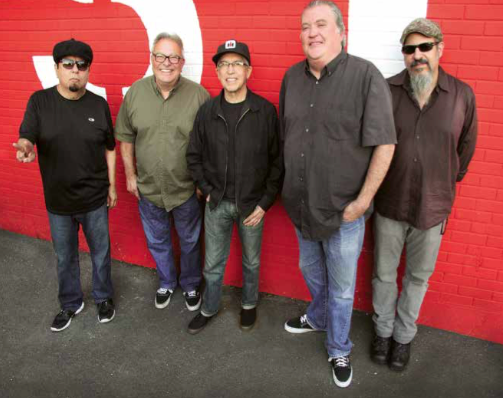The Core: Los Lobos’ David Hidalgo
This story originally appeared in the October_November issue of Relix. To subscribe, click here.

THIS IS 42
The five years since [2010’s] Tin Can Trust went by fast, and before we realized it, the time had come to do another record. In 2013, we put out the Disconnected in New York City record, which was just a reworking of old songs, for our 40th anniversary. After we did that, we knew that a new studio album was going to be necessary soon. But it wasn’t until February of this year that we actually got into the studio, started recording and came up with some new songs. For the past few years, whenever I’ve had an idea—a video, a piece of audio, a chord change or whatever—I would record it on my iPhone and hold on to it. So I had these outlines on my phone and, when it came time to do the record, I went through them all to get started.
HOT-BUTTON ISSUES
We’re not the type of band that’s always writing. We’ll write for an album and then step back and write for another album. But, by writing that way, the songs are connected because you’re in a certain frame of mind, and you can see these threads throughout the entire album. Each song relates to the next. One theme that always comes up is the idea of searching—trying to find a home and trying to find peace. Most of our records say something like that. It’s always been part of our story. The whole immigration thing going on here now is messed up—it is a little crazy—and feels really bleak now. It’s always something that we’ve discussed in our music, but I think given the times—and what’s going on in the world—that topic came out a little more on this record.
STUDIO DYNAMICS
[Guitarist/percussionist Louie Pérez] and I usually write together, and [singer/guitarist César Rosas] writes a lot, too. I’ll play my sketches for Louie, and we’ll talk through our ideas until we find a direction. We’ll go in the first day to record and we’ll be like, “Who’s got something?” If I have an idea, then I try to lay it out for everyone, but it naturally changes and grows into something when the band gets ahold of it. Other times, César comes in and he has his ideas and we’ll play them out together. We do that with almost every song, though there are a few cases where the songs are more thought-out before we go into the studio. For this album, we used some old eight-track cassette stuff, too—we recorded “There I Go” in the ‘90s but we never used it. I rediscovered the demo of the song and it seemed to be pretty good, so we used it. My old eight-track cassette was broken, so we found one in perfect condition on the Internet. We bought it, took it to the studio and transferred all of the material from the eight-track to Pro Tools. We have been on a roll with learning to adapt to different situations over the years.
NASHVILLE SKYLINES
We are being given the Lifetime Achievement in Performance Award by the Americana Music Association, and it feels great. I appreciate any award and it feels good to belong to something—to be recognized by the industry, writers, performers and people in the Nashville scene. Nashville has become the center of the world for all music, not just for country music. It’s just a place that musicians are constantly drawn to. Between my family and our own music, I haven’t had too much time for side work, but [Los Lobos multi- instrumentalist Steve Berlin] has kept in touch with the rising music scene. His other career is as a producer, and he’s always looking for something interesting. I did recently play with Jonah Smith—who has lived out here in LA for a few years—on an album he’s been working on and I am still in contact with Soulive, who I have been friends with for years and have had a few opportunities to play with here and there.
TREASURED FRIENDSHIPS
We met Jerry Garcia back in the ‘80s and struck up a friend- ship, and that’s something that we treasure to this day. The Deadheads adopted us and embraced us. That means a whole lot to us, too, so that’s something that’s been a big influence. We don’t use a setlist most of the time. If it’s a loose setting, then we’ll just wing it. We’ll figure out maybe the first three songs and, from there, we’ll just try to read the crowd. If they shout out something, then we’ll play it.
Recently, we also had Bob Weir come out and play with us [at the Dear Jerry tribute in Maryland this past May] and it was amazing. I hope our relationship lasts until the end of our career. I have been really into Gibson SGs, and I looked up all of this YouTube stuff from the ‘60s and ‘70s last night. Jerry was using SGs a lot—like on the Live/Dead album. That was my favorite playing and what got me into his gigs. So that connection or inspiration is always there.



















